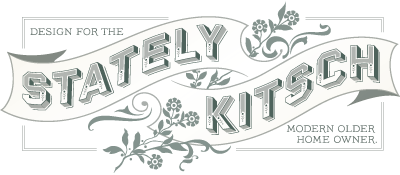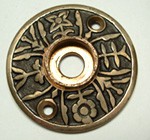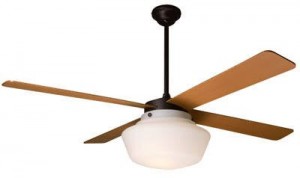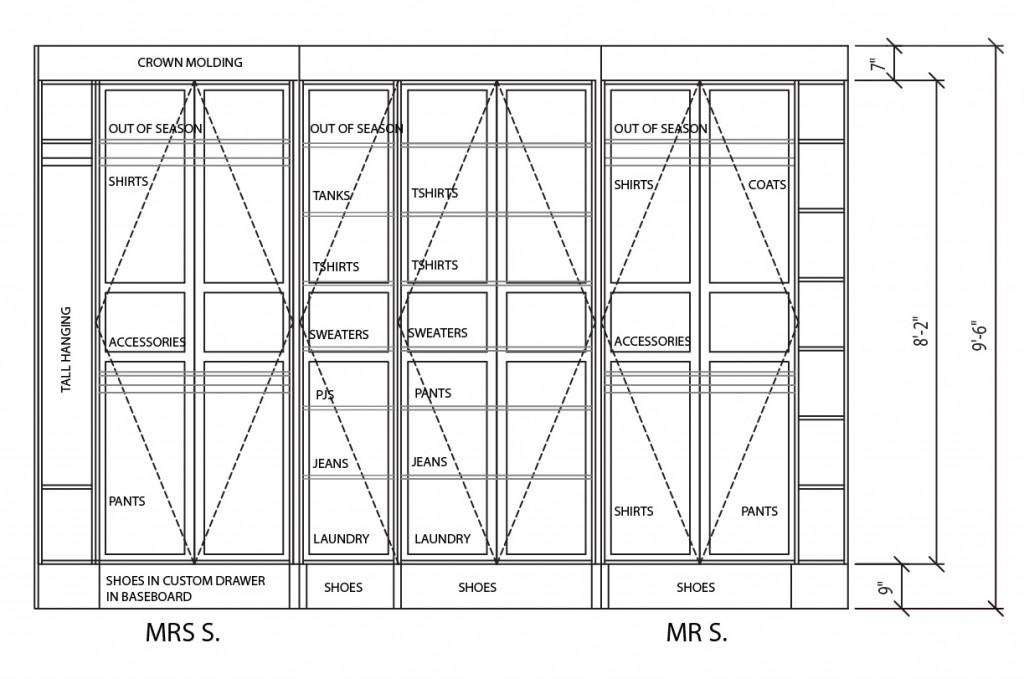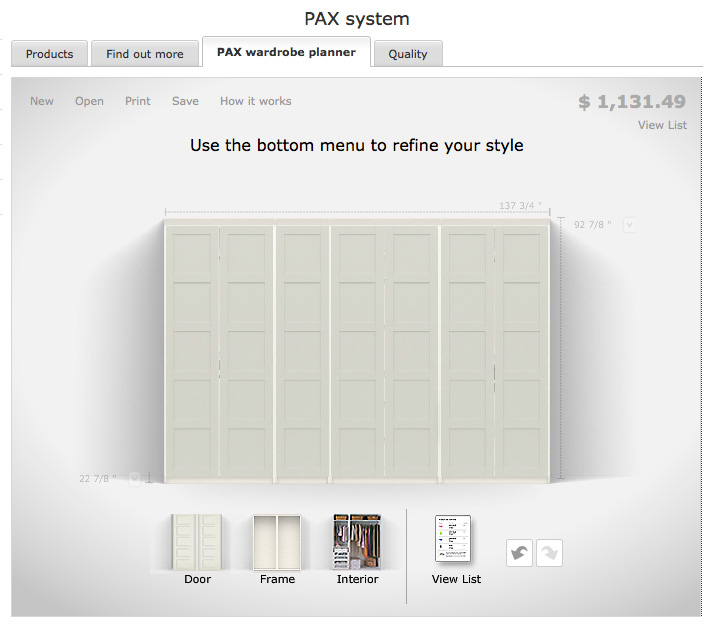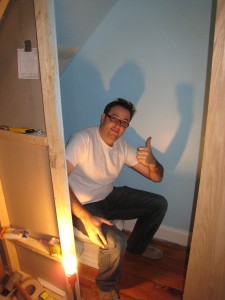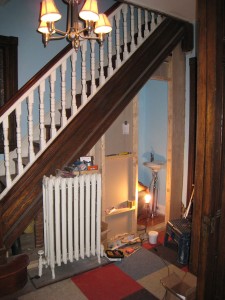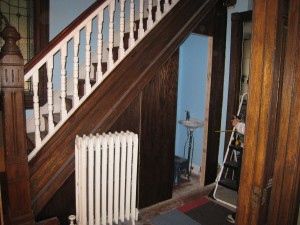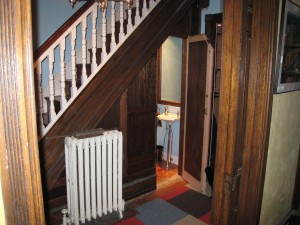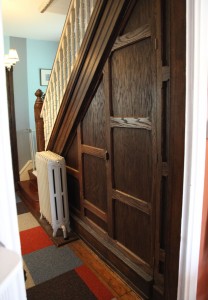We have almost all of the original 123 year old interior door hardware in our house and it is showing its age. We have a reoccurring problem with the hinges, the doors staying shut and the door rosettes breaking. We have done some piecemeal work, but we need to look at the doors as a group and make a decision on what we are going to do. We have 5 regular doors, 4 of which need work (one for each of the 3 bedrooms, one to the basement stairs and one to the upstairs bathroom). We will also be moving the door to our bedroom about 7″ so that will have to get worked on no matter what.
Door Hinges:

Note the area where the screw have failed in between the door casing and the door frame. This area required quite a bit of fill
Our Door Hinges are simple 3″x3″ steeple hinges (small by modern standards). Many fancier Victorian houses had more elaborate hinges, sometimes referred to as “Eastlake” style. I don’t mind ours except for the fact that the placement of the screw holes is very problematic. The holes would be much better if they were closer to the edge. In our case the outer screws end up not into the door frame blocking but in the gap in between the blocking and the trim/casing. I have fixed several of these, but because of this condition it is almost impossible to get a good hold. On one of the doors upstairs the previous owner added screws into the corner of the hinges. They did not do a particularly good job of this, but it is worth considering, over replacing all of the hinges. The only new 3″x3″ hinges that I have found that meet my general requirements are cast iron hinges from Charleston Hardware Co. What are my requirements? The hinges must stylistically match the rest of the hardware, the pins are removable and the screw placement needs to work with our door framing. I made the mistake of buying non-removable pins when I replaced the hinges on the front door and I REALLY regret this.
Wooden Door Knobs:
The interior doors all have wooden door knobs (except for the bathroom). At first I thought this was really unusual, but now that I am a lot more familiar with Victorian houses, I have found that at least around here it was fairly common to have wooden door knobs. Many fancier Victorians would have had bronze door knobs with elaborate details. I quite like the feel of our wood knobs. However 2 sets of these were painted and 1 set was replaced. A couple of months ago I managed to find 3 sets on ebay for a good price, so I bought them and they have been waiting for installation.
Wooden Door Knob Rosettes:
Currently we have wooden door rosettes & key hole escutcheons (with the exception of the bathroom door which must have been replaced in the 1920s or so with a glass knob and metal rosette). I have yet to see another house with wooden rosettes (I am guessing that most of them broke a long time ago).  In case you are wondering, the rosette or escutcheon plate is is the piece that keeps the knob in place, located directly behind the door knob. Often called back plates, the type we have is typically referred to as rosettes because they are round. If you are searching for replacements, it is good to do a search for door rosette, backplate and escutcheon. Most of our door rosettes have split, which leads to the door knob always being loose. This is exacerbated by the screws holding the hinges in place failing causing the door to settle. I am currently considering several options for the rosettes, both vintage and reproduction. I still haven’t found keyhole escutcheon covers that I like, but since this is mostly cosmetic as I don’t have the skeleton keys for the doors I am not in as big of a hurry to find these. I find that many of the reproduction patterns for door hardware aren’t as crisp as the originals (which really bothers me). Here are the ones that I am currently considering. Again these are typically listed as antique/reproduction bronze Eastlake door rosettes. The price on these vary quite widely. These 3 are all pretty reasonably priced, although if I go with the antique ones I am going to have to see if Charleston Hardware Co. will sell me the screws that I need (ones that are the right size and not too long so as not to hit the mortise locks which we are not replacing). All of these are about 2″ in diameter and should work with the wood doorknobs. They also all have daisies on them, which are my favorite flower and match the daisies on the Kitchen mantel and the upstairs stained glass window.
